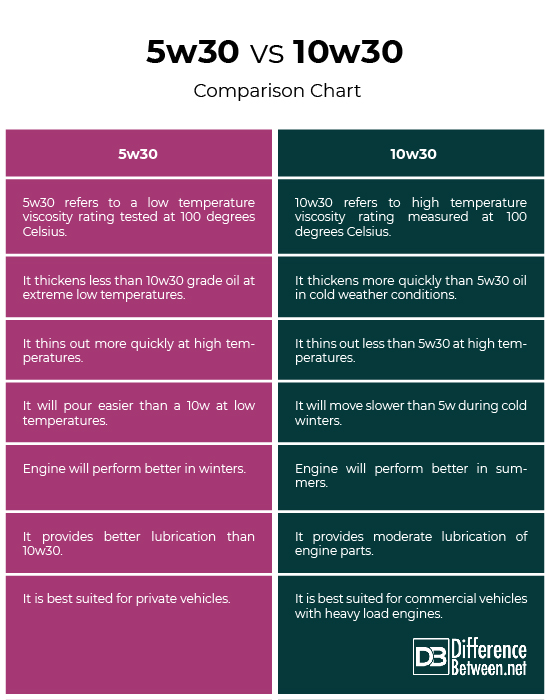A transmission change does not remove all of the transmission fluid. This service only replaces a portion of the fluid, while some old fluid remains in the system.
However, a transmission flush is a procedure that exchanges all the fluid inside the gearbox with new, clean fluid. This process requires specialized equipment and can only be done at a professional shop. It is important to understand the difference between a transmission change and a transmission flush to ensure the proper maintenance of your vehicle’s transmission.

Credit: www.wikihow.com
Introduction To Transmission Fluid
During a transmission change, not all of the transmission fluid is removed. A transmission change typically replaces only a portion of the fluid, while a transmission flush removes all the old fluid and replaces it with new, clean fluid. This procedure is best performed by a professional to ensure proper equipment and technique.
The Role Of Transmission Fluid
Transmission fluid is a critical component of your car’s transmission system. It serves multiple purposes, including lubricating the gears and other moving parts, regulating the temperature, and protecting against wear and tear. The fluid also helps to transfer power from the engine to the transmission, which helps to ensure smooth and efficient shifting.Common Myths Surrounding Transmission Fluid Changes
There are several myths surrounding transmission fluid changes that can lead to confusion and misinformation. One of the most common is the idea that changing the fluid will remove all of the old fluid from the system. While a fluid change will replace a significant portion of the old fluid, it will not remove every last drop. Another myth is that transmission fluid only needs to be changed if there is a problem. In reality, regular fluid changes are essential to maintaining the health and longevity of your transmission. Waiting until a problem arises can lead to costly repairs and potentially even transmission failure. It’s also important to note that not all transmission fluid is created equal. Using the wrong type of fluid can cause serious damage to your transmission, so it’s essential to use the fluid recommended by the manufacturer. In conclusion, understanding the role of transmission fluid and the importance of regular fluid changes is essential to keeping your transmission running smoothly. By debunking common myths and following the manufacturer’s recommendations, you can help ensure that your car’s transmission lasts as long as possible.Transmission Fluid Change Vs. Flush
When it comes to maintaining your vehicle’s transmission, understanding the difference between a transmission fluid change and a flush is crucial. Both methods are designed to replace old fluid with new, but they differ in their approach and effectiveness. Let’s explore the defining differences and the pros and cons of each method.
Defining The Differences
Before deciding which method to opt for, it’s important to understand the variances between a transmission fluid change and a flush:
- A transmission fluid change involves draining the old fluid and replacing it with new fluid, typically replacing only about half of the total fluid capacity.
- On the other hand, a transmission flush utilizes equipment to completely remove old fluid and replace it with new fluid, effectively exchanging all the fluid inside the gearbox.
Pros And Cons Of Each Method
Both transmission fluid change and flush methods have their advantages and drawbacks:
| Method | Pros | Cons |
|---|---|---|
| Fluid Change |
|
|
| Flush |
|
|
The Reality Of Complete Fluid Removal
During a transmission change, not all transmission fluid is removed. Flushing the transmission fluid involves exchanging all the old fluid with new fluid, a process done by professionals using specialized equipment. It’s crucial to understand the difference between a fluid change and a complete fluid flush for optimal transmission maintenance.
How Much Fluid Does A Change Remove?
When it comes to a transmission fluid change, one might wonder how much fluid is actually removed during the process. Well, the truth is that a typical fluid change will only remove a portion of the transmission fluid. The exact amount that is removed can vary depending on the specific vehicle and the method used for the change. However, on average, a fluid change will typically remove about 40-50% of the old fluid. This means that a significant amount of the old fluid will still remain in the transmission even after a change.Is Complete Removal Possible With A Flush?
Now, you might be wondering if a transmission fluid flush can completely remove all of the old fluid. A transmission fluid flush is a more thorough process that involves using specialized equipment to flush out all of the old fluid and replace it with new fluid. However, even with a flush, it is still difficult to completely remove all of the old fluid from the transmission system. Some residual fluid may still remain in the torque converter, cooler lines, and other parts of the transmission. While a flush can help remove a larger percentage of the old fluid compared to a regular change, it may not achieve complete removal. In conclusion, while a transmission fluid change or flush can help replace a significant amount of the old fluid, it is challenging to achieve complete removal. It is important to follow the manufacturer’s recommendations for fluid change intervals and use high-quality transmission fluid to ensure the optimal performance and longevity of your transmission system.Common Misconceptions Debunked
Contrary to popular belief, changing a transmission does not remove all of the transmission fluid. A transmission flush is necessary to completely exchange all of the fluid in the gearbox with new, clean fluid. This service typically takes less than an hour and requires specialized equipment only found in professional shops.
Myth: Never Change Old Transmission Fluid
Many believe that changing old transmission fluid can harm the vehicle.
- Old fluid can cause issues like slipping gears and rough shifting.
- Regular changes prevent costly transmission repairs.
Truth About Fluid Changes And Vehicle Health
Regular transmission fluid changes are crucial for a healthy vehicle.
- Old fluid can lead to transmission problems and reduce lifespan.
- Changing fluid maintains smooth operation and prevents damage.
Ignoring fluid changes can lead to costly repairs in the long run.
The Impact Of Delayed Or Skipped Changes
When it comes to maintaining your vehicle’s transmission, ensuring regular fluid changes is crucial. Delaying or skipping transmission fluid changes can lead to various risks and long-term effects on the transmission system. Understanding the impact of delayed or skipped changes is essential for preserving the functionality and longevity of your vehicle’s transmission.
Risks Of Not Changing Fluid
Failure to change the transmission fluid at recommended intervals can result in several risks:
- Increased friction and heat buildup
- Contamination from metal shavings and debris
- Loss of lubrication and reduced performance
- Accelerated wear and tear on transmission components
Long-term Effects On Transmission
The long-term effects of delayed or skipped fluid changes can be detrimental to the transmission system:
- Severe damage to internal components
- Transmission slippage and erratic shifting
- Costly repairs or premature transmission failure
Credit: www.civicx.com
How To Decide: Change Or Flush?
When considering whether to change or flush the transmission, it’s important to note that a transmission change does not remove all of the transmission fluid. A fluid change replaces only a portion of the fluid, while a flush exchanges all the old fluid with new, clean fluid, typically done by a professional service.
How to Decide: Change or Flush? When it comes to maintaining your vehicle’s transmission, it’s important to know when to change or flush the transmission fluid. Changing the transmission fluid involves draining the old fluid and replacing it with new fluid, while flushing the transmission involves using a machine to pump out all of the old fluid and replace it with new fluid. But how do you decide which option is best for your vehicle? Evaluating Your Vehicle’s Needs The decision to change or flush your transmission fluid ultimately depends on your vehicle’s needs. If your vehicle has a high mileage or has been experiencing transmission problems, a flush may be the best option to fully clean out the system and prevent further damage. However, if your vehicle has been well-maintained and you are simply due for a routine transmission fluid change, a simple fluid change may suffice. Expert Recommendations It’s always a good idea to consult with an expert mechanic or the vehicle manufacturer’s recommendations to determine the best course of action for your specific vehicle. Some manufacturers may recommend a specific interval for changing or flushing the transmission fluid, while others may not recommend a flush at all. In conclusion, whether you choose to change or flush your transmission fluid, it’s important to stay on top of routine maintenance to ensure the longevity and performance of your vehicle’s transmission. By evaluating your vehicle’s needs and seeking expert recommendations, you can make an informed decision on the best course of action for your vehicle.Diy Vs. Professional Services
During a transmission change, all old fluid is removed and replaced with new fluid. DIY methods may not remove all fluid effectively, while professional services ensure a complete flush for optimal performance and longevity of the transmission system.
What You Can Do At Home
Changing transmission fluid yourself can be a cost-effective option. You can drain the fluid using a pan and refill it through the dipstick tube.When To Seek Professional Help
If you lack the necessary tools or experience, it’s best to let a professional handle the transmission fluid change. They can ensure the job is done correctly.Credit: www.kia-forums.com
Maintaining Your Transmission Fluid
Proper maintenance of your transmission fluid is crucial for the longevity of your vehicle’s transmission system. Regularly checking and changing the transmission fluid can help prevent costly repairs and ensure smooth operation of your vehicle.
Tips For Longevity
1. Check your vehicle’s owner’s manual for the recommended transmission fluid change interval.
2. Use the type of transmission fluid recommended by the manufacturer for your specific vehicle.
3. Regularly inspect for any signs of fluid leaks and address them promptly.
4. Avoid towing heavy loads beyond the recommended capacity of your vehicle.
Signs It’s Time For A Change Or Flush
1. Delayed or rough shifting of gears
2. Unusual noises or grinding sensations during gear shifts
3. Transmission fluid that appears dark or has a burnt odor
4. Slipping or jerking movements while driving
5. Visible fluid leaks under the vehicle
Conclusion
A transmission flush replaces all the fluid, providing a thorough clean. It’s essential to maintain your transmission for optimal performance and longevity. Regular fluid changes or flushes can prevent costly repairs and ensure smooth operation of your vehicle. Prioritize your transmission’s health today!


